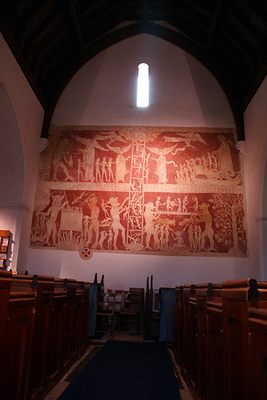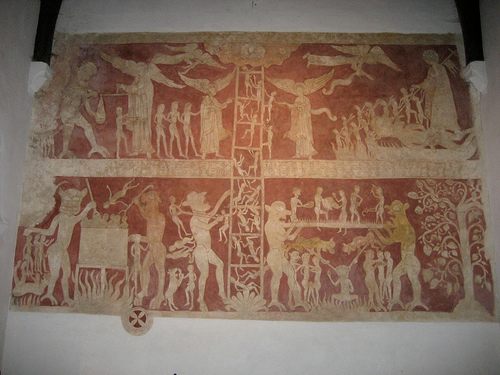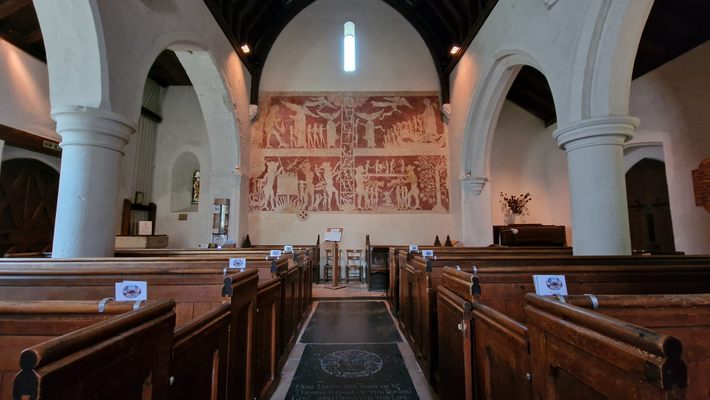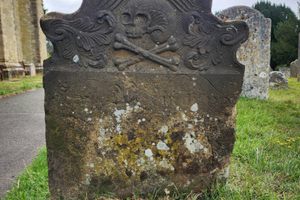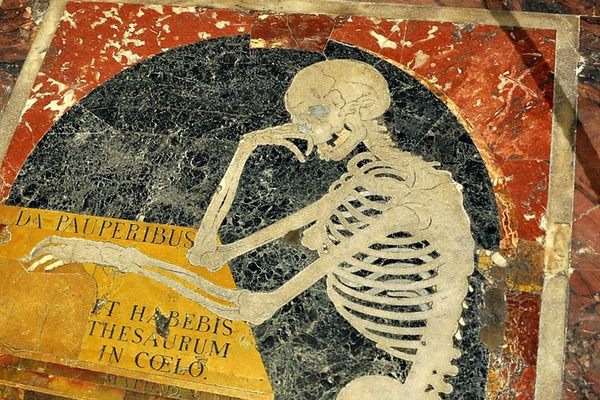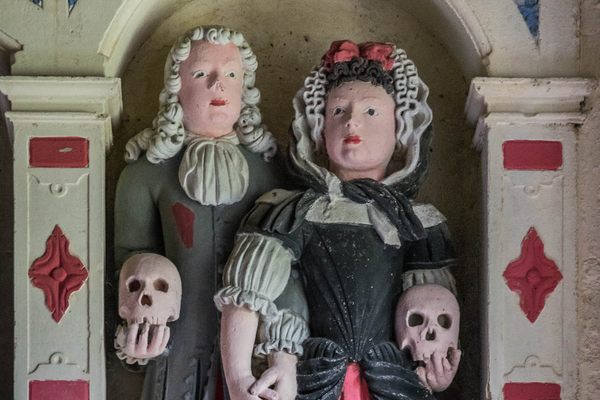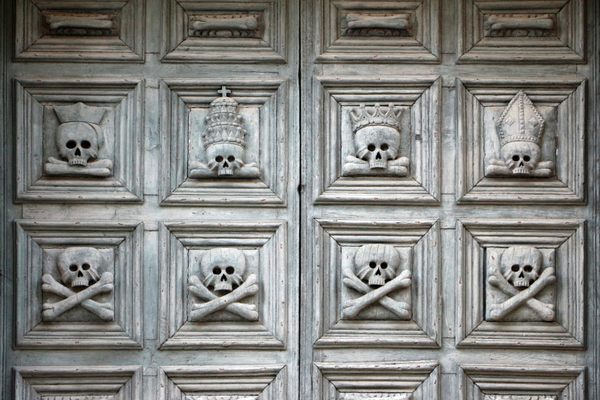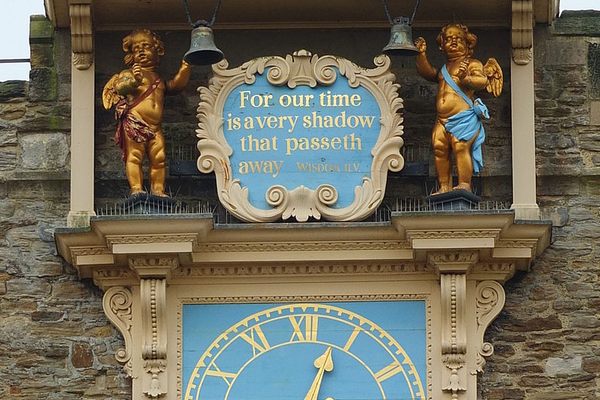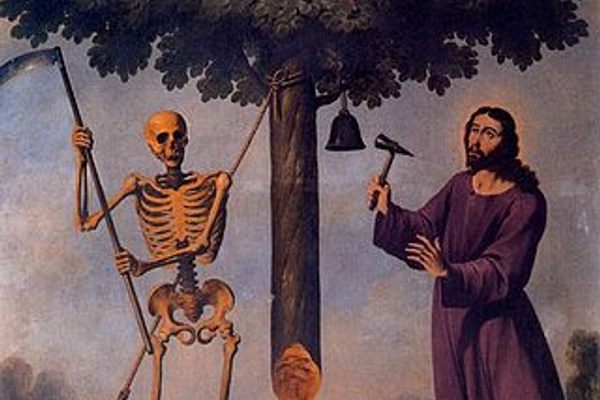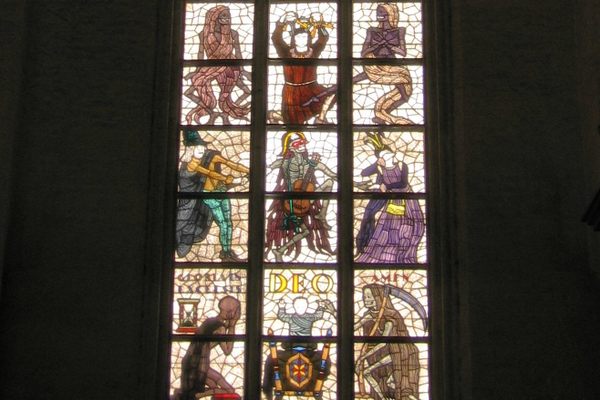About
The huge cross-shaped fresco depicting the ladder to Heaven and the fiery tortures of Hell on the west wall of Chaldon church was almost lost. Most likely hidden from view during the English Civil War and Commonwealth period, when many Catholic images were destroyed or covered, it lived hidden and forgotten under whitewash for nearly 200 years before it was uncovered accidentally in 1869 during redecorating. In the years following, the mural slowly lost colors from mold growth under the coating of wax which had been applied to protect it. In 1989 the wax was removed in a second restoration.
Measuring 17 by 11 feet, it is possibly the first mural of its kind in England. It is believed to have been painted in or before the 1200's by a traveling monk who may have been influenced by Greek styles. It depicts scenes of specific tortures - note the murderers being thrown into a boiling cauldron on the left, and usurers being roasted on the right - which were common throughout Christendom as a kind of visual aid for moral righteousness.
According to the Parish Council: "The whole picture is in the form of a cross, formed by the Ladder and the horizontal division between Heaven and Hell. Starting at the lower right, we have the 'tree of the knowledge of good and evil', loaded with fruit, with Satan as a serpent in the branches. Two devils hold up a 'bridge of spikes' which dishonest tradesmen have to cross.
First, the blacksmith making a horseshoe without his anvil, then a mason without a chisel, the spinners without a distaff, and a potter without a wheel. Below the bridge, the usurer is sitting in flames. He is blind, money pours from his mouth, and he has to count it all (avarice). On his right two figures represent envy, while on the left, two figures embrace - lust. The remaining deadly sins are scattered around in small scenes to the left of the ladder."
The church itself dates to at least 727 AD, and is still in active use, with services on Sundays.
Related Tags
Community Contributors
Added By
Published
September 15, 2009
